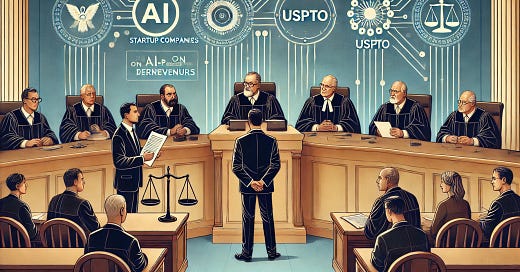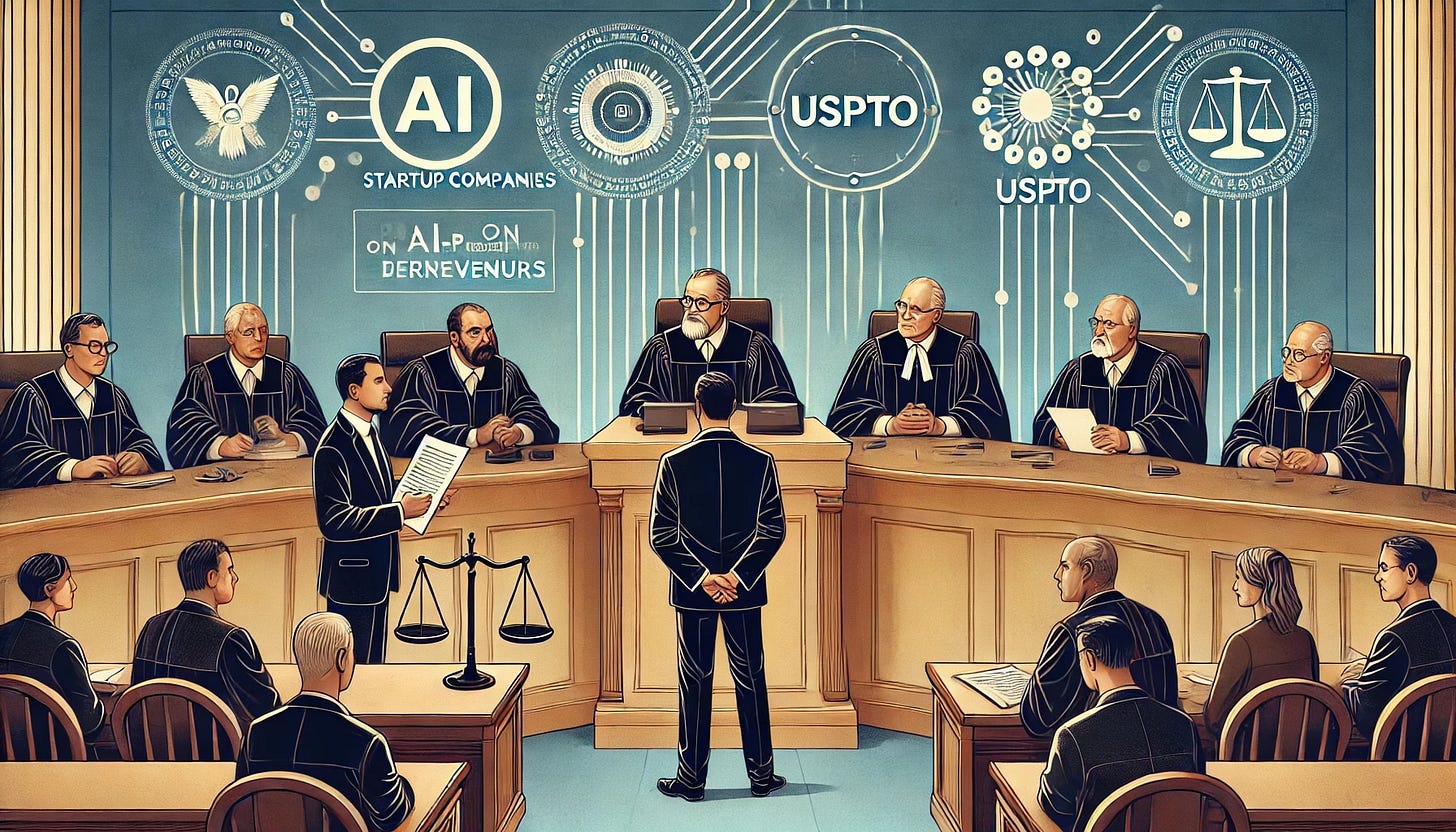This "Lessons" blog post examines an interesting article titled "Examining Patent Subject Matter Eligibility of AI Inventions" by Georgios Effraimidis and Joel Lehrer, which was recently published in Law360. (Law360 often over-simplifies the topics it covers.)
This article explores the complexities of patenting artificial intelligence (AI) inventions under U.S. law, particularly considering recent advancements in AI technologies. As AI grows, the article notes that AI inventions are playing a pivotal role across various sectors. However, the surge in AI-related patents has raised concerns about whether such innovations are eligible for patent protection under U.S. patent law, specifically Title 35 of the U.S. Code, Section 101.
AI patents have been increasing at a rapid pace, with filings jumping by over 82% between 2010 and 2020, according to data from the U.S. Patent and Trademark Office (USPTO). Despite this growth, AI inventions are more likely to face rejections based on patent-ineligible subject matter compared to non-AI inventions.
The article explains that the patent eligibility framework, largely shaped by two pivotal U.S. Supreme Court rulings—Mayo Collaborative Services Inc. v. Prometheus Laboratories Inc. (2012) and Alice Corp. v. CLS Bank International (2014)—has made it more difficult for software-related inventions, including many AI technologies, to qualify for patent protection. The so-called "Alice-Mayo test" is a two-step process used to determine if a patent claim is directed to ineligible subject matter, such as an abstract idea or law of nature, and whether it incorporates an inventive concept that makes it patentable.
The article further discusses the USPTO’s recent guidance, released in July 2024, to help examiners and applicants assess the subject matter eligibility of AI-related inventions. The guidance provides practical examples, such as anomaly detection in cybersecurity, AI-driven speech separation, and personalized medical treatments for fibrosis patients, to illustrate how AI innovations might satisfy patentability requirements by demonstrating real-world benefits and practical applications.
Data from the USPTO shows a significant discrepancy in patent rejections between AI and non-AI inventions. While only 10.2% of non-AI inventions are rejected for ineligible subject matter, the figure rises to 45.4% for AI inventions. The likelihood of rejection also varies across AI technologies, with inventions related to "vision" having the lowest rejection rate at 32.5% and "evolutionary computation" facing the highest rejection rate at 57.8%. These statistics suggest that AI inventors face greater challenges in securing patent protection due to the complexities surrounding patent eligibility for software-related innovations.
The article concludes by emphasizing the importance of carefully drafting AI-related patent applications to meet the Alice-Mayo test and ensure they qualify as patentable subject matter. This heightened bar for AI patent eligibility highlights the ongoing need for inventors to navigate intellectual property law with a clear understanding of the unique challenges AI technologies pose.
Much to the annoyance of my attorneys, I consider myself an "Internet Lawyer," often drafting contracts, agreements, and letters. That said, I strongly recommend consulting with your legal counsel for all things related to patents and IP. However, since this is my blog and I hold a few patents, I do have some thoughts to share.
I believe that patents today can contribute to a defensive moat and enterprise value for certain AIs and technologies and companies, though your experience may vary.
Patents are supposed to incentivize innovation by granting inventors exclusive rights for a limited time, protecting their intellectual property from unauthorized use. In exchange, inventors must disclose their inventions, promoting knowledge sharing. Patents also stimulate economic growth, attract investment, and foster competition by encouraging technological advancements.
Patents, as a formal system of protecting inventions, date back to the 15th century. The first recorded patent was issued in Venice in 1474, when the Venetian Senate passed a law granting inventors exclusive rights to their inventions for a limited time.
The U.S. Supreme Court has been focusing on the wrong issues in patent law for years, particularly with its flawed Section 101 jurisprudence, which lacks any basis in the 550-year history of patents. Section 101 of U.S. patent law was originally part of the Patent Act of 1790, the first patent law passed in the United States. However, the modern version of Section 101, as it exists today, was shaped by the Patent Act of 1952, which revised and codified U.S. patent law. This act clarified the categories of patentable subject matter and remains the foundation of modern U.S. patent law.
Section 101 is seen as diverting attention from the true intent of patent law, influenced by the actions of courts, judges, lawyers, litigation delays, and the machinations of the USPTO.
The proper approach to patenting should focus on products rather than subject matter. The product-based patenting approach simplifies patent law into two requirements: (1) better, faster, or stronger, and (2) a "secret sauce."
Hopefully, the next Congress will pass "patent reform" for the first time this century and bring about improved defensibility in the era of AI.





Agreed!